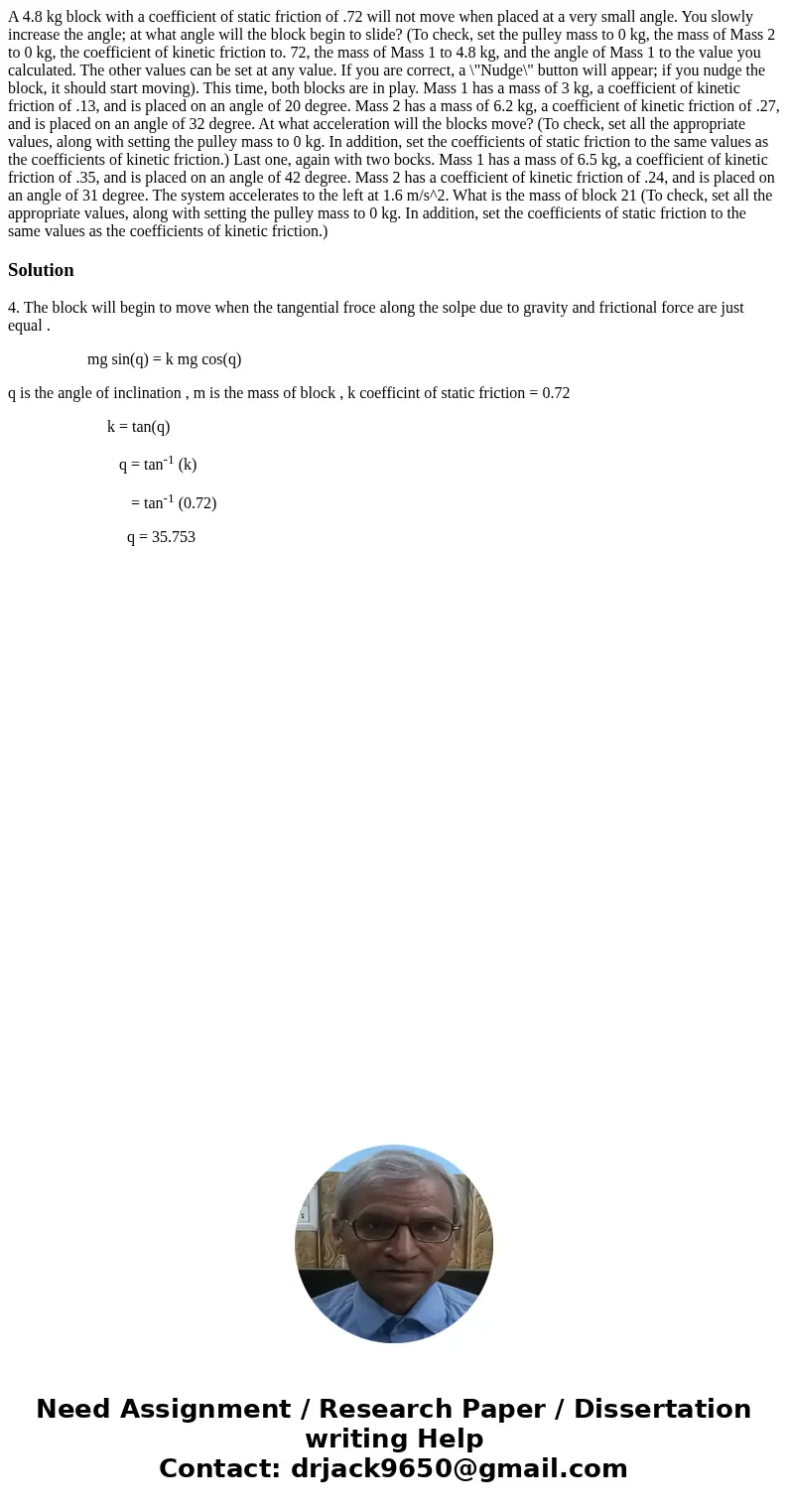A 48 kg block with a coefficient of static friction of 72 wi
A 4.8 kg block with a coefficient of static friction of .72 will not move when placed at a very small angle. You slowly increase the angle; at what angle will the block begin to slide? (To check, set the pulley mass to 0 kg, the mass of Mass 2 to 0 kg, the coefficient of kinetic friction to. 72, the mass of Mass 1 to 4.8 kg, and the angle of Mass 1 to the value you calculated. The other values can be set at any value. If you are correct, a \"Nudge\" button will appear; if you nudge the block, it should start moving). This time, both blocks are in play. Mass 1 has a mass of 3 kg, a coefficient of kinetic friction of .13, and is placed on an angle of 20 degree. Mass 2 has a mass of 6.2 kg, a coefficient of kinetic friction of .27, and is placed on an angle of 32 degree. At what acceleration will the blocks move? (To check, set all the appropriate values, along with setting the pulley mass to 0 kg. In addition, set the coefficients of static friction to the same values as the coefficients of kinetic friction.) Last one, again with two bocks. Mass 1 has a mass of 6.5 kg, a coefficient of kinetic friction of .35, and is placed on an angle of 42 degree. Mass 2 has a coefficient of kinetic friction of .24, and is placed on an angle of 31 degree. The system accelerates to the left at 1.6 m/s^2. What is the mass of block 21 (To check, set all the appropriate values, along with setting the pulley mass to 0 kg. In addition, set the coefficients of static friction to the same values as the coefficients of kinetic friction.)
Solution
4. The block will begin to move when the tangential froce along the solpe due to gravity and frictional force are just equal .
mg sin(q) = k mg cos(q)
q is the angle of inclination , m is the mass of block , k coefficint of static friction = 0.72
k = tan(q)
q = tan-1 (k)
= tan-1 (0.72)
q = 35.753

 Homework Sourse
Homework Sourse